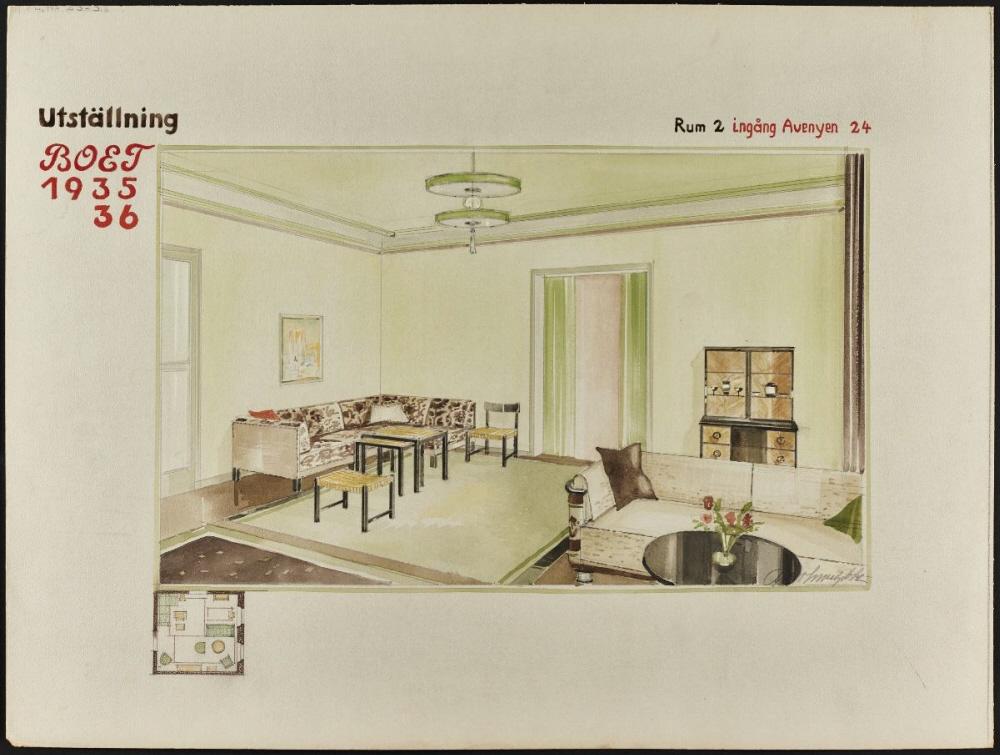Otto Schulz
a rare chair, Boet, Gothenburg 1930s.
Black stained beech, seat upholstered in braided leather. Height 71 cm, seat height 42 cm.
Wear and stains.
Literature
Otto Schulz (ed.), "Boet: Månadsskrift för Hemkultur, Hantverk och Konstindustri", 1934-35, the model illustrated on p. 209.
The model is also illustrated in a watercolor titled "Utställning BOET 1935-36" in the Otto Schulz collection preserved at the Röhsska Museum in Gothenburg, inventory number RKM 37:1477-1970.
Designer
Otto Schulz was a German-born designer and architect who spent the majority of his life working in Gothenburg, Sweden. In 1920, Schulz founded the company Boet together with Adolf Nordenberg, which became a highly influential interior and furniture manufacturer. Schulz's daring aesthetics have a multifaceted character that has contributed to important elements in both the Swedish Grace and Swedish Modern concepts. Schulz also published the magazine Boet, which, along with the store and business, helped to cement his role as central in interior design contexts. Some of Schulz's characteristics included developing techniques for which he took out patents, such as Bopoint, Bosaik, and Botarsia, all of which contributed to the furniture's distinctive aesthetics and quality.
Read more



































































